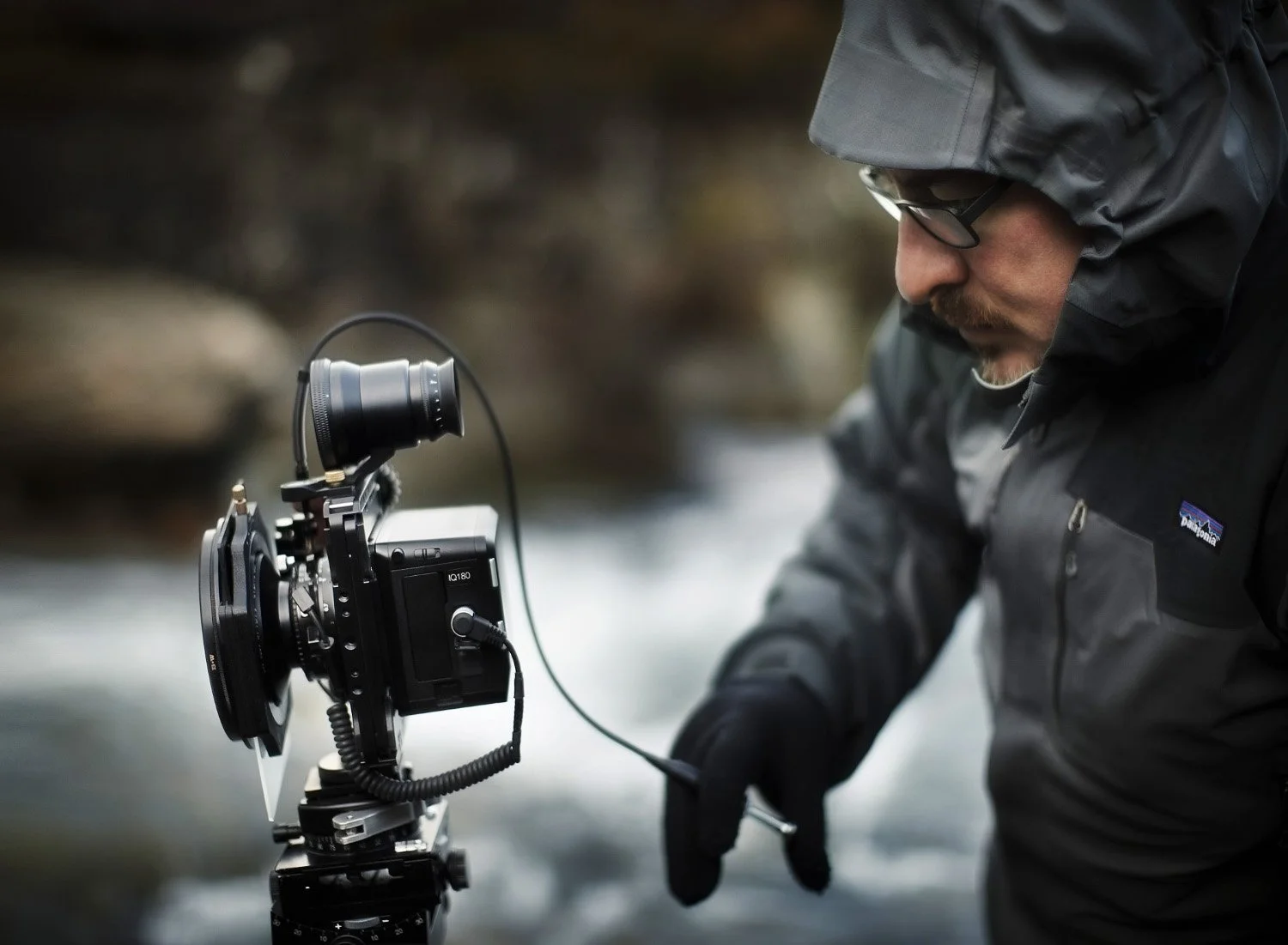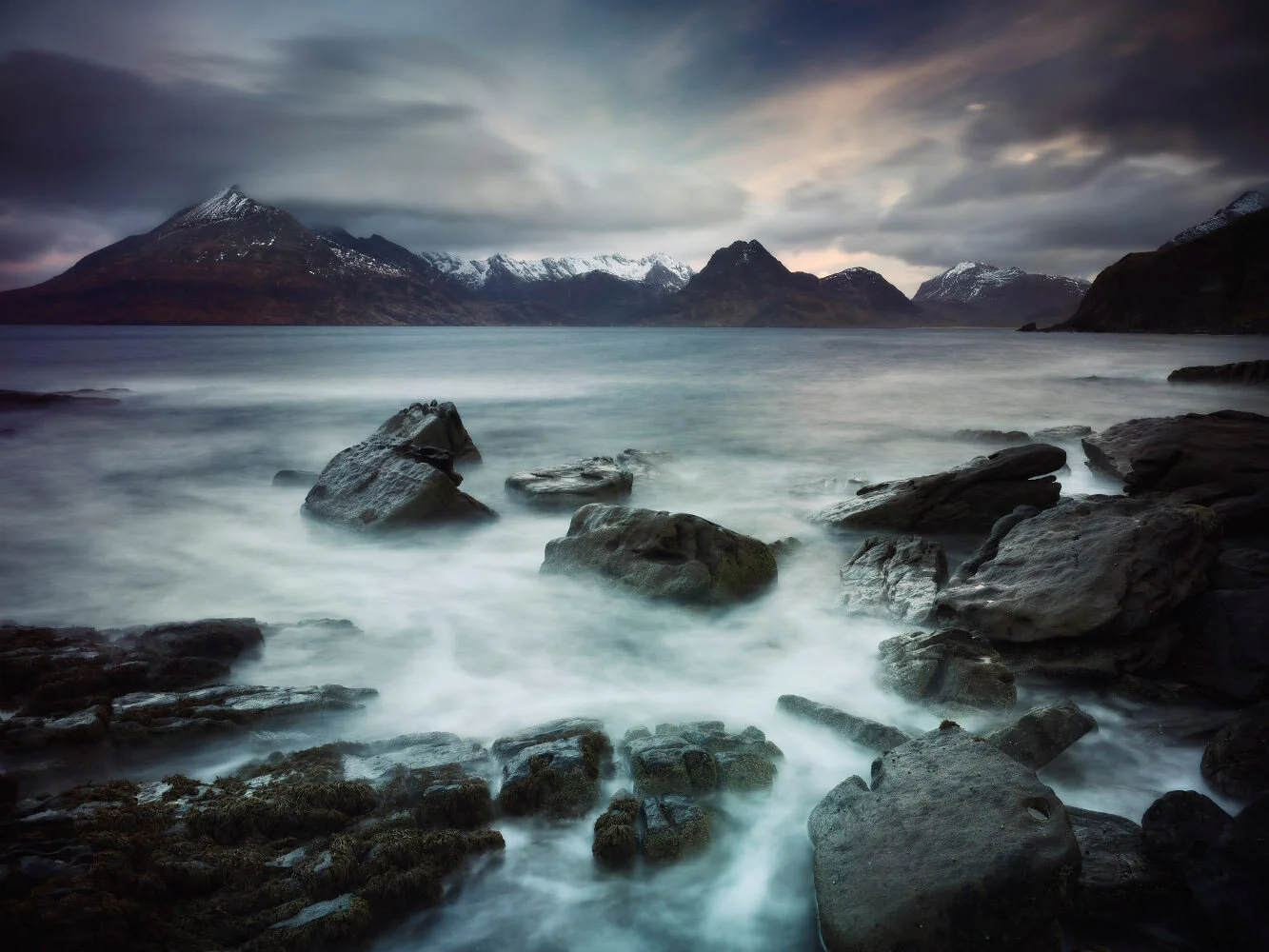Storm over Loch Coruisk
I first became fascinated by Loch Coruisk after seeing Sidney Richard Percy's rather romantic painting.
It is one of Scotland’s most special lochs, in a truly dramatic setting at the base of the Black Cuillin, on the Isle of Skye.
Sir Walter Scott visited the loch in 1814 and wrote: “Rarely human eye has known a scene so stern as that dread lake, with its dark ledge of barren stone...”
Loch Coruisk - 1874 by Sidney Richard Percy
My friend Leo Manning-Jones and I had a trip to the Isle of Skye planned for October 2011 and we decided we’d hike in and aim to make some photographs there.
Instead of the usual boat trip or hike in from Elgol, we decided we would take the route through Glen Sligachan, which was around 7 miles, and wild camp overnight. This route meant we would avoid the infamous ‘bad step’ which neither of us fancied with our heavy back packs.
““I first became fascinated by Loch Coruisk after seeing Sidney Richard Percy’s romantic painting...””
Weather reports gave us a window of opportunity to hike in and pitch camp, with the promise of rain overnight and mixed light the next morning. The reality was quite different.
As we peaked the ridge that leads you down to the loch, the sky darkened dramatically and the winds picked up. We had to move quickly to find a spot to pitch our tents.
Most of the ground was wet and boggy but we found a tiny patch that wasn’t, just big enough for two one man tents. We literally had time to put the tents up before the first hail storm arrived.
The winds increased dramatically and continued throughout the night. We became flat pack human beings as the gusts squashed our tents down on top of us. The whole tent felt like it was moving around me. I never realised just how vulnerable the zips on a tent feel until that night!
Working on the edge of Loch Coruisk. © Leo Manning-Jones 2011.
When the morning finally arrived, the winds had dropped slightly and the hail was replaced by flurries of snow and occasional shafts of hard sunlight, lighting the harsh forms of the black rock.
Through tired eyes I managed to make one photograph that I was truly happy with and which conveyed the brooding atmosphere of the place. It was made close to where the loch meets the sea and not far from where we managed to pitch our tents.
I wanted to travel light and so took the bare minimum of equipment. The ALPA 12 STC with just the one lens, the HR Alpagon 4.0/40mm SB17. A couple of spare batteries, CF cards and back-up cables.
Working with the ALPA 12 STC set up. © Leo Manning-Jones 2011.
The weather turned again and made photography impossible with rain and sleet coming straight in to the lens, so we quickly packed up camp and made the hike back to Sligachan.
It’s a place I’d love to return to, but next time I’d want spend a few days and nights. And who knows, maybe I’d get a glimpse of the mythical water horse that some say lives in the dark depths of the loch…
Loch Coruisk, Isle of Skye, Inner Hebrides, N.W. Scotland - October 2011.
This photograph, along with many others made on Skye and the northwest of Scotland, appears in my award winning book North Northwest.
Please click the link below to find out full details, including the edition options and purchasing information.
Technical Information :
Camera / Lens - ALPA 12 SWA with ALPA HR Alpagon 4.0/40mm SB17 with ALPA tilt/swing adapter 0° - 5°, 17 mm.
Filtration - 0.6 Soft edge ND Grad.
MFDB - PhaseOne IQ180. ISO 35.









